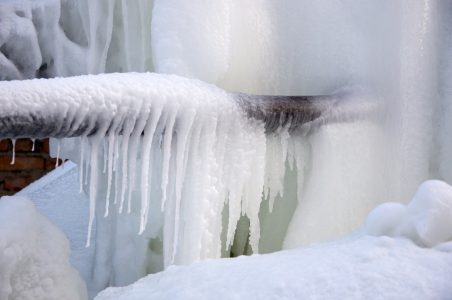Each person may have their personal opinion on the subject of How to Prevent Your Pipes From Freezing.

Winter can wreak havoc on your pipes, specifically by freezing pipes. Right here's exactly how to stop it from happening and what to do if it does.
Intro
As temperatures drop, the danger of frozen pipes rises, possibly resulting in expensive fixings and water damages. Recognizing how to prevent frozen pipelines is essential for property owners in cold climates.
Recognizing Icy Pipes
What triggers pipes to ice up?
Pipelines freeze when revealed to temperatures listed below 32 ° F (0 ° C) for extended periods. As water inside the pipelines ices up, it broadens, putting pressure on the pipeline wall surfaces and possibly causing them to rupture.
Risks and damages
Frozen pipelines can result in water disturbances, building damage, and pricey repair work. Ruptured pipes can flood homes and create considerable architectural damage.
Indicators of Frozen Piping
Recognizing icy pipelines early can stop them from breaking.
Exactly how to recognize icy pipelines
Look for decreased water circulation from taps, unusual odors or noises from pipes, and noticeable frost on revealed pipes.
Avoidance Tips
Protecting susceptible pipelines
Cover pipes in insulation sleeves or utilize warmth tape to safeguard them from freezing temperature levels. Focus on pipelines in unheated or exterior locations of the home.
Home heating techniques
Maintain indoor areas sufficiently heated up, especially areas with pipes. Open cupboard doors to allow cozy air to circulate around pipelines under sinks.
Shielding Exterior Plumbing
Yard hoses and outdoor faucets
Detach and drain pipes yard hose pipes prior to wintertime. Install frost-proof spigots or cover exterior faucets with shielded caps.
What to Do If Your Pipelines Freeze
Immediate activities to take
If you suspect icy pipes, keep taps open to alleviate pressure as the ice melts. Use a hairdryer or towels taken in hot water to thaw pipes slowly.
Long-Term Solutions
Architectural changes
Take into consideration rerouting pipes away from outside walls or unheated locations. Add added insulation to attics, cellars, and crawl spaces.
Updating insulation
Purchase high-quality insulation for pipelines, attics, and walls. Correct insulation assists keep consistent temperatures and decreases the threat of icy pipelines.
Conclusion
Avoiding icy pipelines calls for positive measures and fast responses. By recognizing the causes, signs, and safety nets, property owners can shield their pipes during cold weather.
5 Ways to Prevent Frozen Pipes
Drain Outdoor Faucets and Disconnect Hoses
First, close the shut-off valve that controls the flow of water in the pipe to your outdoor faucet. Then, head outside to disconnect and drain your hose and open the outdoor faucet to allow the water to completely drain out of the line. Turn off the faucet when done. Finally, head back to the shut-off valve and drain the remaining water inside the pipe into a bucket or container. Additionally, if you have a home irrigation system, you should consider hiring an expert to clear the system of water each year.
Insulate Pipes
One of the best and most cost-effective methods for preventing frozen water pipes is to wrap your pipes with insulation. This is especially important for areas in your home that aren’t exposed to heat, such as an attic. We suggest using foam sleeves, which can typically be found at your local hardware store.
Keep Heat Running at 65
Your pipes are located inside your walls, and the temperature there is much colder than the rest of the house. To prevent your pipes from freezing, The Insurance Information Institute suggests that you keep your home heated to at least 65 degrees, even when traveling. You may want to invest in smart devices that can keep an eye on the temperature in your home while you’re away.
Leave Water Dripping
Moving water — even a small trickle — can prevent ice from forming inside your pipes. When freezing temps are imminent, start a drip of water from all faucets that serve exposed pipes. Leaving a few faucets running will also help relieve pressure inside the pipes and help prevent a rupture if the water inside freezes.
Open Cupboard Doors
Warm your kitchen and bathroom pipes by opening cupboards and vanities. You should also leave your interior doors ajar to help warm air circulate evenly throughout your home.
:strip_icc()/snow-outdoor-faucet-pipes-4af65d1e5e904fb1aa7bf74071fe5d89.jpg)
We were made aware of that report on 6 Ways to Prevent Frozen Pipes from a pal on another web property. So long as you enjoyed reading our page please remember to pass it around. Thanks a bunch for your time. Revisit us soon.
Book Service Now